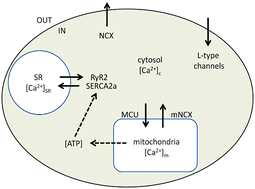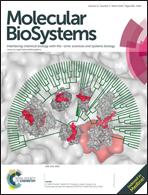Coupling calcium dynamics and mitochondrial bioenergetic: an in silico study to simulate cardiomyocyte dysfunction
Abstract
The coupling of intracellular Ca2+ dynamics with mitochondrial bioenergetic is crucial for the functioning of cardiomyocytes both in healthy and disease conditions. The pathophysiological signature of the Cardiomyocyte Dysfunction (CD) is commonly related to decreased ATP production due to mitochondrial functional impairment and to an increased mitochondrial calcium content ([Ca2+]m). These features advanced the therapeutic approaches which aim to reduce [Ca2+]m. But whether [Ca2+]m overload is the pathological trigger for CD or a physiological consequence, remained controversial. We addressed this issue in silico and showed that [Ca2+]m might not directly cause CD. Through model parameter recalibration, we demonstrated how mitochondria cope up with functionally impaired processes and consequently accumulate calcium. A strong coupling of the [Ca2+]m oscillations with the ATP synthesis rate ensures robust calcium cycling and avoids CD. We suggested a cardioprotective role of the mitochondrial calcium uniporter and predicted that a mitochondrial sodium calcium exchanger could be a potential therapeutic target to restore the normal functioning of the cardiomyocyte.


 Please wait while we load your content...
Please wait while we load your content...